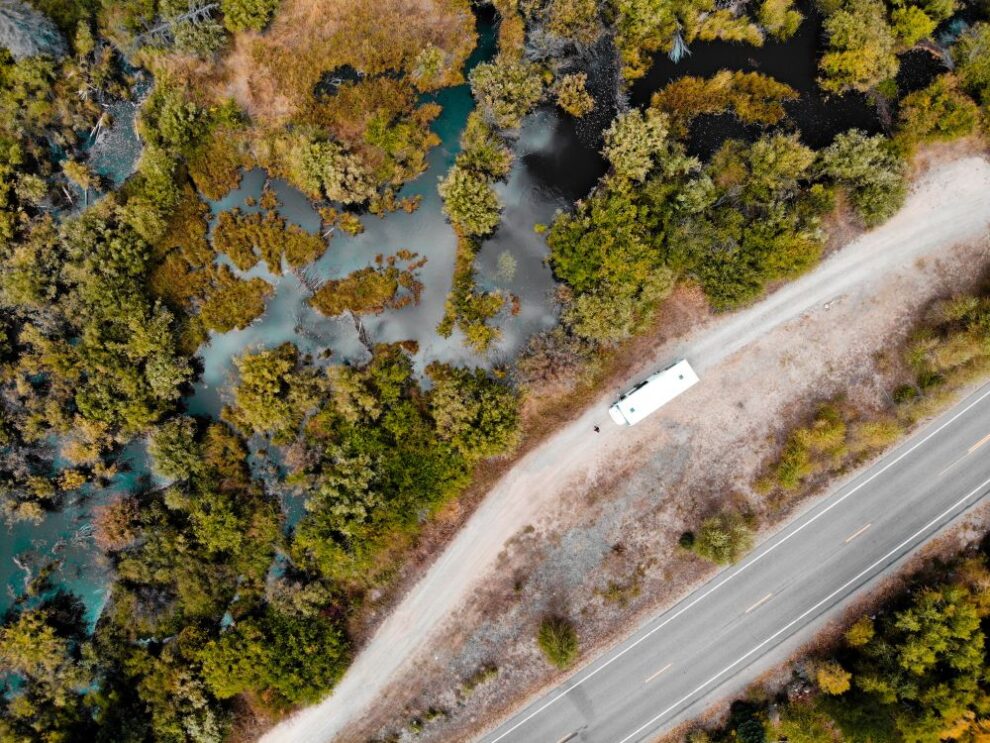The report details a pathway for the US energy system to reach net-zero emissions by 2050 using the lowest cost technologies available.
This so-called Net Zero Scenario (NZS) is presented alongside two other scenarios: a Policy Scenario evaluating the decarbonizing impact of key provisions of the Inflation Reduction Act, and an Economic Transition Scenario (ETS) that deploys the cheapest energy technologies without consideration for climate goals.
The power sector is one of the largest sources of carbon emissions in the US today, but it is also the sector that is decarbonizing the most rapidly. However, it needs to go farther and faster, as it plays a key role in the country realizing a net-zero economy. BNEF’s modeling finds that the cheapest way for the US to reduce emissions involves scaling up investment in wind and solar power, along with low-carbon dispatchable electricity.
In BNEF’s Net Zero Scenario, wind and solar installations reach 3,292 gigawatts by 2050, up from 288 gigawatts in 2022. Solar capacity alone reaches 2,065 gigawatts of installed capacity by 2050, split between rooftop systems and large-scale projects.
In all scenarios, remaining coal generation shuts down during the 2030s, but natural gas continues to play a role in the power grid in 2050. In the Net Zero Scenario, all gas generation in 2050 is paired with CCS. The Policy Scenario finds that by 2028, gas generation coupled with carbon capture and storage (CCS) is cost-competitive against unabated gas, after accounting for tax credits. However, CCS tax credits are set to phase out just when the technology begins to see adoption. If extended through 2050, some 205 gigawatts of gas with CCS would see adoption in the power sector, and this would offset emissions from 45% of gas generation in that year.
Tara Narayanan, BloombergNEF’s Senior Associate for US Power Markets, said: “As cleaner power becomes key to decarbonizing everything else, the US must address its love affair with gas.“Carbon capture could be a solution to emissions from natural gas, if the subsidies are extended rather than being phased out just when the technology starts to become competitive”.
The Net Zero Scenario entails a $30 trillion investment opportunity across the US energy system between 2022 and 2050; a third more than the base case of $22 trillion in the Economic Transition Scenario. To get on track for net zero, the US will need to rapidly scale up investment over the next decade, rising from the $141 billion invested in energy transition technologies in 2022, to nearly $10 trillion spent cumulatively by 2032 to rapidly cut down on emissions.
In all scenarios, about half of the funding required through 2050 is driven by consumer-led purchases of electric vehicles. Investment in power grids is also a key enabler for a net-zero transition: BNEF estimates $3.8 trillion could be needed between today and 2050 for system reinforcements, new connections and asset replacements to accommodate rising power demand. A corresponding investment in low-carbon power sources will be needed, to the tune of $5.6 trillion over the same time period.
The IRA’s impact on bridging this financing gap depends on the amount of additional private sector investment that public sector financial support can attract to the market. “The IRA is a multibillion dollar down-payment on decarbonization, but it, and other policies, will need to stimulate trillions in investment to reach net zero,” says Derrick Flakoll, Policy Associate for North America at BloombergNEF.
This research forms part of a series of regional and sector reports diving deeper into results from BloombergNEF’s global New Energy Outlook, including reports for Europe, Australia, China, Japan, the US and India. Report summaries are available at about.bnef.com/new-energy-outlook-series.
Source : Climate Action










